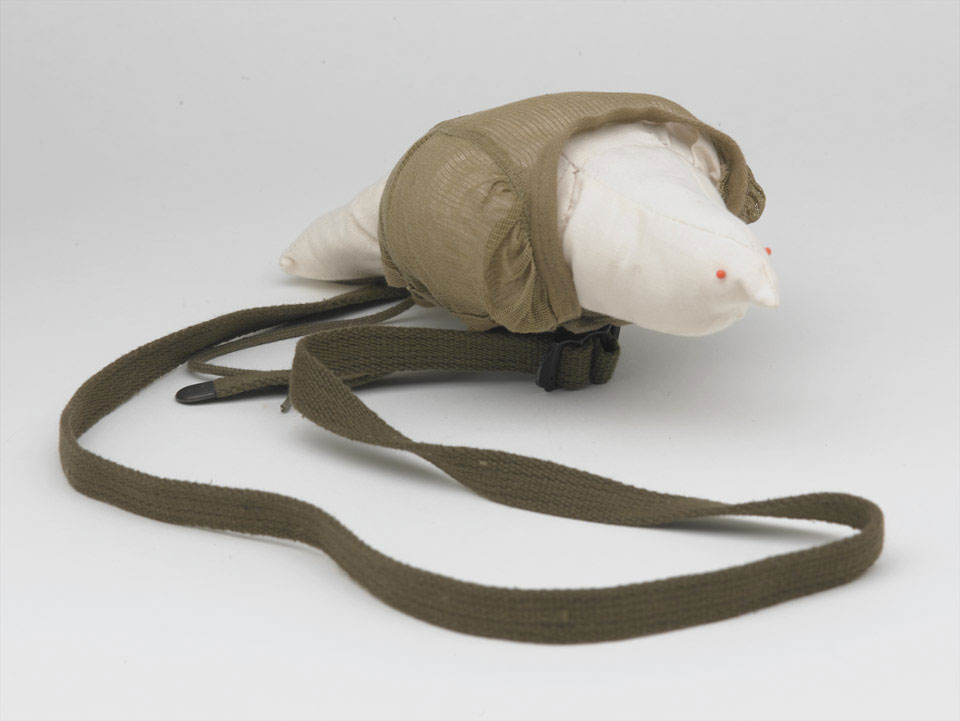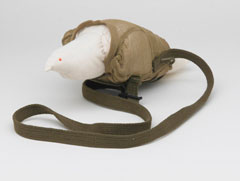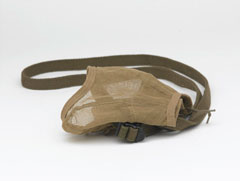
Online Collection
Pigeon carrying vest, 1939 (c)
United States Forces issue. stamped instructions advise, 'Important Do Not Retain Pigeon in Vest in Excess of Six Hours.'
During the World Wars pigeons were used to carry messages because of their speed and their incredible homing instincts. With a maximum speed of 96 kilometres an hour (60mph) they could quickly fly up and out of range. They could also be relied upon when other forms of communication had failed - 95 per cent of messages sent by pigeon were received. Unfortunately, they could not be used after dark. They were also susceptible to gas, and countermeasures like birds of prey.
During the First World War (1914-1918) British pigeons numbered 20,000 by 1918. A force of 380 men handled them. The number of birds used during the Somme offensive of 1916 was approximately 12,000. Pigeons were transported in 'assault baskets' carried on the back of soldiers. The average time to carry a message from the front line to headquarters was 25 minutes. Several hundred pigeon messages were passed during most battles. Casualties were fairly high with around 10% of the birds employed during the Battle of Messines (1917) falling foul of enemy fire. Other fatalities resulted from lofts being shelled and gassed.
During the Second World War (1939-1945) several pigeons received the Dickin Medal, the 'animals' VC'. One such bird was 'Mercury' who won it after 'carrying out a special task involving a flight of 480 miles from Northern Denmark while serving with the Special Section Army Pigeon Service in July 1942'. Another was the 'Duke of Normandy', 'the first bird to arrive with a message from Paratroops of 21st Army Group behind enemy lines on D Day 6 June, 1944'.
NAM Accession Number
NAM. 1997-10-127-1
Copyright/Ownership
National Army Museum Copyright
Location
National Army Museum, Conflict in Europe gallery
Object URL
https://collection.nam.ac.uk/detail.php?acc=1997-10-127-1




